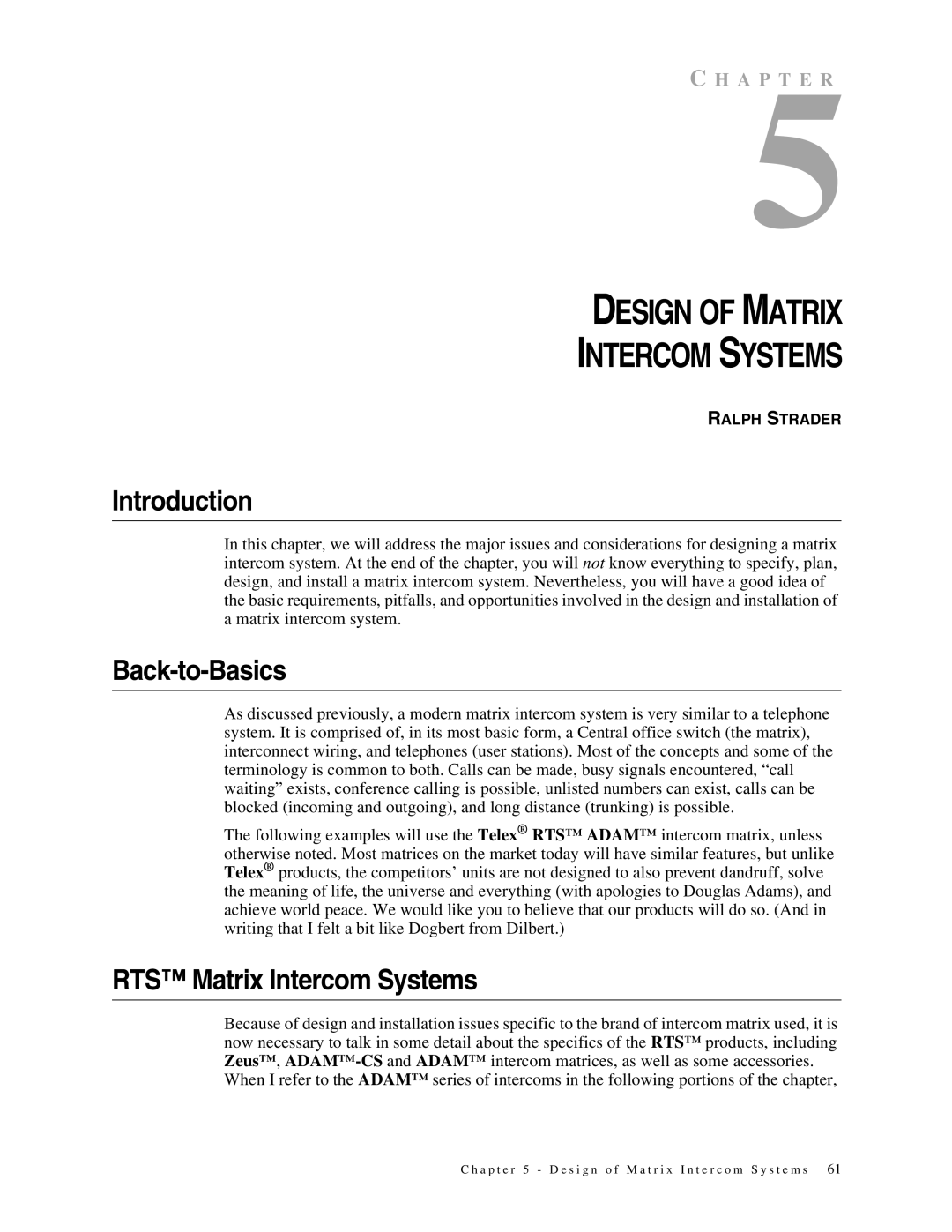
C H A P T E R
5
DESIGN OF MATRIX
INTERCOM SYSTEMS
RALPH STRADER
Introduction
In this chapter, we will address the major issues and considerations for designing a matrix intercom system. At the end of the chapter, you will not know everything to specify, plan, design, and install a matrix intercom system. Nevertheless, you will have a good idea of the basic requirements, pitfalls, and opportunities involved in the design and installation of a matrix intercom system.
Back-to-Basics
As discussed previously, a modern matrix intercom system is very similar to a telephone system. It is comprised of, in its most basic form, a Central office switch (the matrix), interconnect wiring, and telephones (user stations). Most of the concepts and some of the terminology is common to both. Calls can be made, busy signals encountered, “call waiting” exists, conference calling is possible, unlisted numbers can exist, calls can be blocked (incoming and outgoing), and long distance (trunking) is possible.
The following examples will use the Telex® RTS™ ADAM™ intercom matrix, unless otherwise noted. Most matrices on the market today will have similar features, but unlike Telex® products, the competitors’ units are not designed to also prevent dandruff, solve the meaning of life, the universe and everything (with apologies to Douglas Adams), and achieve world peace. We would like you to believe that our products will do so. (And in writing that I felt a bit like Dogbert from Dilbert.)
RTS™ Matrix Intercom Systems
Because of design and installation issues specific to the brand of intercom matrix used, it is now necessary to talk in some detail about the specifics of the RTS™ products, including Zeus™,
When I refer to the ADAM™ series of intercoms in the following portions of the chapter,
C h a p t e r 5 - D e s i g n o f M a t r i x I n t e r c o m S y s t e m s 61
